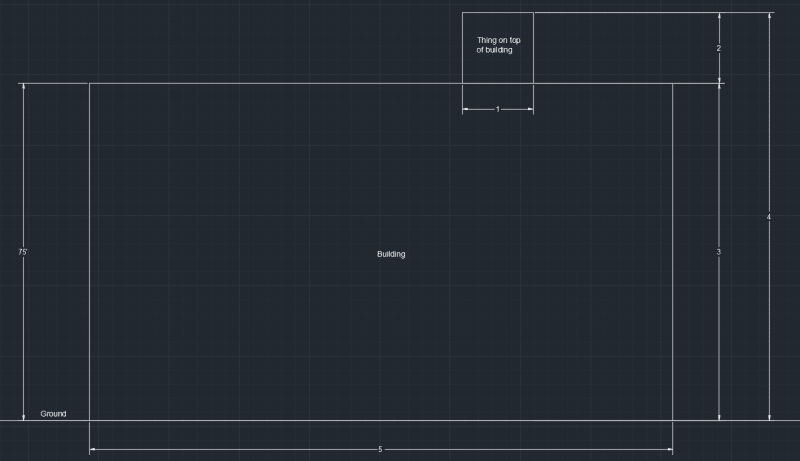FreeCrowbars
Structural
I work in telecom and oftentimes we put new structures on existing rooftops. We use Figure 29.5-1 (for "Chimneys, tanks, rooftop equipment, & similar structures over 60') a LOT as it's the best description of the kind of work we do much of the time. The question is what do "h" and "D" really represent in this figure?
I want to put this in terms of "building" and "thing on top of building"
I have heard arguments that "h" is the height of the "building" and other arguments that "h" is the height of the "thing on top of building".
Similarly I've heard that "D" represents the height of the "thing on top of building" and other arguments that "D" is the width of "thing on building".
What are the actual explanations for "h" and "D" for this figure (fig. 29.5-1)?
To make this really simple I've uploaded a simple sketch of a "building" with a "thing" on it. Which value is "h" and which value is "D" with respects to figure 29.5-1?

I want to put this in terms of "building" and "thing on top of building"
I have heard arguments that "h" is the height of the "building" and other arguments that "h" is the height of the "thing on top of building".
Similarly I've heard that "D" represents the height of the "thing on top of building" and other arguments that "D" is the width of "thing on building".
What are the actual explanations for "h" and "D" for this figure (fig. 29.5-1)?
To make this really simple I've uploaded a simple sketch of a "building" with a "thing" on it. Which value is "h" and which value is "D" with respects to figure 29.5-1?

